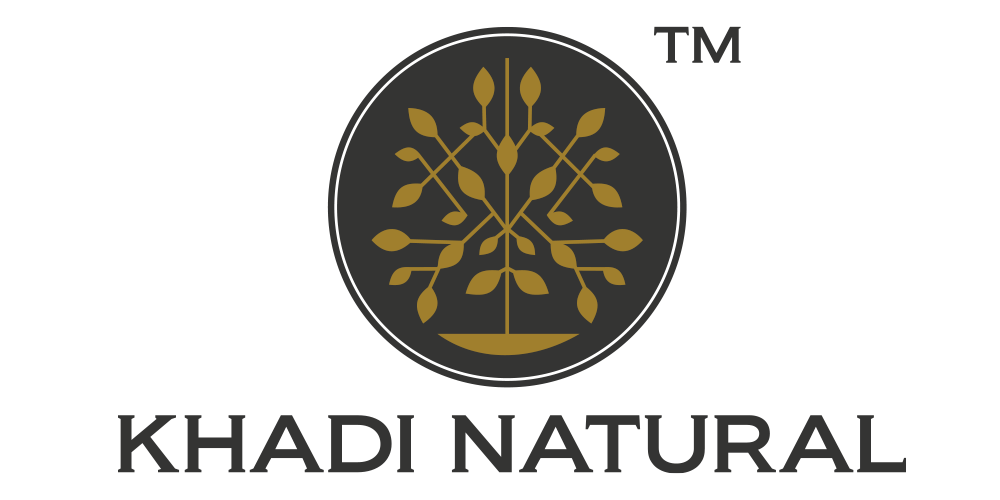
Pigmentation on Skin: Causes, Types & Natural Ways to Treat It
Everyone desires clear, even-toned skin, but for many, pigmentation stands in the way. Whether it's a few dark spots or large patches of discolouration, skin pigmentation issues are incredibly common. While they are not usually harmful, pigmentation can affect confidence and even cause frustration.
So, if you’re also going through hyperpigmentation and pigmentation on face, you would need to first learn what causes it, the types that exist, and how to treat it, especially through natural methods.
Table of Contents
What Is Skin Pigmentation?
Skin pigmentation refers to the colour of your skin, which is determined by a pigment called melanin. Melanin is produced by skin cells known as melanocytes, and its primary function is to protect your skin from UV rays.
However, when melanin production is disrupted or becomes uneven, it can lead to hyperpigmentation (darker patches) or hypopigmentation (lighter patches).
In simple words,hyperpigmentation is the condition where certain areas of the skin become darker than the surrounding skin due to excess melanin production.
Common Causes of Skin Pigmentation
Here are some common hyperpigmentation causes, so let’s take a look!
-
Sun Exposure: It is one of the most common causes of pigmentation. UV rays trigger melanin production as a defence mechanism, and prolonged exposure can cause uneven patches and sunspots.
-
Hormonal Changes: Conditions like melasma often occur due to hormonal shifts, especially in women during pregnancy, menopause, or when using birth control pills.
-
Post-Inflammatory Hyperpigmentation (PIH): This happens after an injury or inflammation to the skin, such as acne, eczema, or psoriasis, leaving behind darkened areas.
-
Aging: As skin ages, it becomes more susceptible to discolouration, particularly in the form of age spots or liver spots.
-
Genetics: Some people are genetically predisposed to pigmentation disorders.
-
Medications and Chemicals: Certain medications (like chemotherapy drugs) and cosmetic products can trigger pigmentation issues as a side effect.
Types of Skin Pigmentation
Here we’ve jotted down the types of skin pigmentation to help you understand the condition in detail!
-
Melasma: Often appears as symmetrical brown or grey-brown patches, usually on the face. It is commonly triggered by hormonal changes and sun exposure.
-
Freckles: Small brown spots are commonly found on sun-exposed areas. They are more noticeable in lighter-skinned individuals.
-
Lentigines (Age Spots): Flat brown spots caused by sun damage and ageing. Unlike freckles, they don’t fade in winter.
-
Post-Inflammatory Hyperpigmentation (PIH): It occurs after skin trauma like cuts, burns, or acne. The skin overproduces melanin in response to inflammation.
-
Sunspots: These are the dark spots or patches that develop due to prolonged sun exposure.
-
Albinism and Vitiligo (Hypopigmentation): Although rare and opposite of hyperpigmentation, these conditions cause the skin to lose pigment and may also require specialised care.
Natural Treatment for Hyperpigmentation
While professional treatments like chemical peels, lasers, and prescription creams are effective, many people prefer natural treatment for hyperpigmentation that are gentler on the skin. Here we’ve listed some tried-and-tested ways on how to treat skin pigmentation naturally!
1. Aloe Vera
-
How it works: Contains aloin, a natural depigmenting compound.
-
How to use: Apply fresh aloe vera gel directly to the affected area and leave it on overnight. We recommend you check out Khadi Natural’s aloe vera face wash or aloe vera transparent gel.
2. Apple Cider Vinegar
-
How it works: Contains acetic acid, which can lighten pigmentation.
-
How to use: Mix equal parts apple cider vinegar and water, apply with a cotton ball for a few minutes, then rinse off.
3. Lemon Juice
-
How it works: Natural bleaching agent rich in vitamin C.
-
How to use: Dilute with water and apply carefully—avoid sun exposure after application as it can make pigmentation worse. If you wish to use uneven skin tone remedies, you can try out Khadi Natural’s Lemon Soap.
4. Green Tea Extract
-
How it works: Contains antioxidants that may reduce pigmentation.
-
How to use: Steep green tea, cool it, and apply with a cotton pad daily. You can check out Khadi Natural’s green tea soap to get rid of pigmentation.
5. Turmeric
-
How it works: Contains curcumin, which has anti-inflammatory and skin-lightening properties.
-
How to use: Mix turmeric with milk or honey to create a paste, apply to affected areas, and rinse after 15 minutes. If you like, you can also use turmeric based soap brands in India.
6. Liquorice Extract
-
How it works: Helps inhibit the enzyme that causes melanin production.
-
How to use: Available in creams, or you can use liquorice tea bags as a compress.
7. Papaya
-
How it works: Contains papain enzyme that helps exfoliate dead skin and promote cell turnover.
-
How to use: Mash ripe papaya and apply as a mask for 15–20 minutes. We recommend you check out Khadi Natural’s papaya face wash.
8. Potato Juice
-
How it works: Natural bleaching agent due to catecholase enzyme.
-
How to use: Rub a raw potato slice on pigmented areas or apply the juice.
Tips to Prevent Pigmentation
Here we’ve jotted down some tips to help you prevent pigmentation, so make sure to go through them!
-
Use Sunscreen Daily: SPF 50 or higher is a must for the best skincare for hyperpigmentation, even on cloudy days or indoors near windows. If you don’t have a product in mind, you can check out our sunscreen range.
-
Limit Sun Exposure: Wear hats, sunglasses, and protective clothing and seek shade whenever possible.
-
Avoid Picking Skin: Squeezing pimples or scratching rashes can lead to PIH.
-
Hydrate and Eat Antioxidant-Rich Foods:Foods like berries, leafy greens, and green tea can support skin health from the inside out.
-
Gentle Skincare Routine: Use mild cleansers and avoid harsh scrubs that could inflame your skin.
When to See a Dermatologist?
While natural remedies can be effective for mild pigmentation, you should consult a dermatologist if:
-
The pigmentation is spreading or changing rapidly.
-
Home treatments have not shown improvement after several weeks.
-
The cause of pigmentation is unclear.
You can also seek medical treatments like laser therapy, microdermabrasion, prescription creams (hydroquinone, retinoids), or chemical peels to treat more stubborn or deep pigmentation.
Final Thoughts
Skin pigmentation can be challenging, but it’s often manageable with a combination of good skincare, protection from the sun by applying sunscreen, and consistency in treatment.
Remember, treating pigmentation is a marathon, not a sprint. With patience and care, it is possible to restore your skin's natural glow. If you are in doubt, seek advice from a skin specialist to guide you toward the best treatment plan tailored to your skin’s needs.
FAQs
Q. What is the main cause of skin pigmentation?
Ans. The primary cause of pigmentation is excess melanin production, often triggered by sun exposure, hormonal changes, inflammation, or skin injuries.
Q. Is pigmentation on the skin permanent?
Ans. Not always. Some types, like post-inflammatory hyperpigmentation or melasma, can fade over time with proper treatment and care. However, others,like age spots, may require medical intervention for complete removal.
Q. Can pigmentation be cured naturally?
Ans. Mild pigmentation can often be lightened naturally with consistent use of ingredients like aloe vera, turmeric, and lemon juice. However, deep or stubborn pigmentation may require dermatological treatments.
Q. How long does it take to see results from natural remedies?
Ans. Natural treatments usually take 4 to 8 weeks of regular use to show noticeable improvement. Patience and consistency are key.
Q. Is it safe to use lemon juice on pigmented skin?
Ans. Lemon juice can help lighten pigmentation, but it may also irritate sensitive skin or cause photosensitivity. Always dilute it and use sunscreen afterwards.









